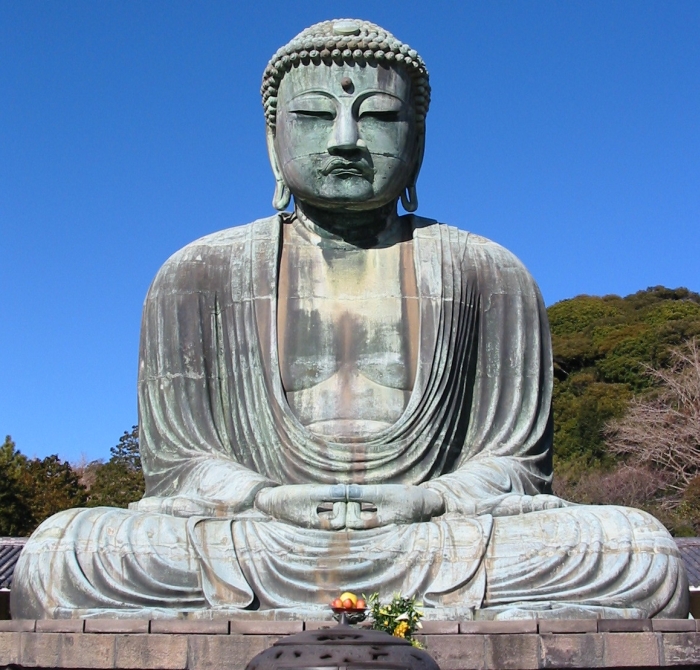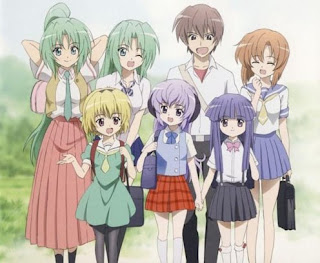Like anyone who has ever sat through an anime, people think, how do the Japanese come up with such strange ideas? Well...the culture itself has an amazing collection of history and mythology that has linked itself in such a strange manner.
Anime is no exception to the rule about the use of the stories, if people will see anime like Sailor Moon, xxxHolic, Tokyo Babylon, X/1999, Lament of the Lamb, Higurashi and so on you will hear the stories.  They are told in different manners and some of the greatest series will show you the stories that have ever existed.
They are told in different manners and some of the greatest series will show you the stories that have ever existed.
When I read about it now, I thought about how silly I was and that Japanese culture was something that I had no interest in until I started to read more into it. Stories like xxxholic and Higurashi took me into a dark side of anime and story telling. I became more interested in trying to make a sort of contribution to the Western World by going to Japan someday to collect the stories of the East and give the stories new life. No to mention try and consider what is going on in the world in a manner that is way beyond the Western thought.
The Anime and Stories
An ime is of course my favorite topic, but that is far from what I am researching, the dark side of mythology is the ghost stories. In Japan, Ghost stories are sort of warnings about what might happen if certain things are ignored and people tread in a manner that could cause lack of balance.
ime is of course my favorite topic, but that is far from what I am researching, the dark side of mythology is the ghost stories. In Japan, Ghost stories are sort of warnings about what might happen if certain things are ignored and people tread in a manner that could cause lack of balance.
When it comes to seeing Japanese mythology in action, Inuyasha is one of the largest contributions. The story about a hanyu, Inuyasha and his friends who try to find shards of a crystal and meet demons of all sorts. You have the Thunder Brothers, the Tengu (Birds of Paradise), Saiyuki (not the anime) characters like the pig coming out, and even the festivals are covered. I would not say it is the greatest storywise, but its contributions are that people are now aware of the stories tied.
One story that comes up is the Tale of the Bamboo Cutter, where an old man finds a little baby in the bamboo and because of his kindness is rewarded. He raises this child as if she was his own and then becomes a rich owner of land. He even starts to be asked if he wants to marry his daughter off, which she gives men various tasks, those that even cause some to die or disappear. Then the Emperor hears of her beauty and pursues her, she tells him as much as she would like to come and live in his palace, she cannot. She has to return to the land of the Moon, and one night she disappears with the people of the sky and never seen again.(Rendering from Japanese Tales please see books in use)
This is a famous story, in fact many animes have different renderings of the story. Sailor Moon S movie has her as a villain who comes to Earth to turn it to ice, while in Inuyasha, she is trapped inside a mirror. There are many other anime that has this story in it, so don't think that these are the only two. D.N.Angel has the same rendering in some sense, so you have a whole list still to use.
Mushi-shi is a new addition to this paper and a piece of art. The Mushi are spirits, things that ar e just as they appear at times, but also they are things that you can't see with the naked-eye. These things are still respected in same cases where they are the creatures that exist, but yet don't exist at the same time. These are spirits who walk the world and don't do much harm. Though if someone is not wise, they can easily anger a Mushi and then in turn cause harm to themselves and others.
e just as they appear at times, but also they are things that you can't see with the naked-eye. These things are still respected in same cases where they are the creatures that exist, but yet don't exist at the same time. These are spirits who walk the world and don't do much harm. Though if someone is not wise, they can easily anger a Mushi and then in turn cause harm to themselves and others.
These are just a few of the myths that follow Japan and also there are influences that are outside the country that do show up. Creatures that are seen even in anime like Rurouni Kenshin, the anime, a woman whose neck grows long and is used to spy on her neighbors is a theme seen in Chinese stories and less in Japanese.
The word oni was brought over by Buddhist monks who were coming to Japan not to convert, but to bring over the ideas of the Buddha. This was later adopted into the culture as part of the traditions and also used in the practices of Kaidan, or Ghost Story telling.
Chinese Influenced
T here are stories that were later brought into the culture and passed on for centuries, one being Journey to the West, it was entitled Saiyuki. Unlike many of the other stories, this was a treasure of China, and Japan built off it in many different animes, two of the most famous are: Dragon Ball and Saiyuki. These are considered some of the most popular, even though in some cases, people who sit through Dragon Ball don't know that it is the story of Son Goku, the monkey and the priest going to the west to bring the Buddhist teachings to the East.
here are stories that were later brought into the culture and passed on for centuries, one being Journey to the West, it was entitled Saiyuki. Unlike many of the other stories, this was a treasure of China, and Japan built off it in many different animes, two of the most famous are: Dragon Ball and Saiyuki. These are considered some of the most popular, even though in some cases, people who sit through Dragon Ball don't know that it is the story of Son Goku, the monkey and the priest going to the west to bring the Buddhist teachings to the East.
The audiences in the United States think it is just an action movie, but in some cases it is the story of how China learned about Buddhism from travelling missionaries who came into the area. Japan had gotten the story as missionaries who practiced Chan, translated to Zen Buddhism who were able to influence a whole group. This is seen on the introduction of Chinese and Easter Philosophy as part of the cultural influences of mythology.
Religious Notes
Japan is known for a couple of religions, one being brought into the country by Chinese missionaries, and the other embraced by the locals of the time. The first is Shinto, one that has been around the longest in some sense in the culture. Though embraced in many ways that has been the state religion up from 1860s during the Bakumatsu reformation period.
Buddhism came to Japan through trade and missionaries from China, the sect of Chan also known as Zen became much more popular as many religous practices were embraced. The culture accepted and some of the practices including some Taoism was adopted into the Samurai culture. This was a philosophical following much more than a religious one.
Definitions
Tengu: Flying mountain demons, sometimes though they are also on the ground, this is a Shinto term
Kami: Gods and Goddesses of Japan, these are sometimes very powerful, sometimes angering them is not recommended and some people want even foriegners to respect the wishes of the Kami.
Oni: This term did not appear in the Japanese wording until the Buddhists came to Japan, this actually is for the Hungry Ghosts of China or even Buddhists from India. These are ghosts who have unfinished business or could not pass through to the after life well. (Sometimes even mentioned in Taoism)Book Sources
Japanese Tales Edited and Translated by Royall Tyler Pantheon Books, New York, 1987 ISBN: 0-375-71451-0
Handbook of Japanese Mythology by Michael Ashkenazi Oxford University Press, Oxford New York, 2003. ISBN: 978-0-19-533262-9
Religions of Japan in Practice Edited by George J. Tanabe Jr. Princeton University Press, New Jersey. ISBN: 0-691-05789-3
A Reader's Guide to Japanese Literature Edited by J. Thomas Rimer Kodansha International, Tokyo. 1999 ISBN:4-7700-2359-6
Journey to the West by Wu Cheng'en Translated by W.J.F. Jenner Foreign Language Press. Beijing China. 1993. ISBN: 7-119-01663-6
Manga Sources
Tokyo Babylon. CLAMP. Volume 1. Tokyo Pop. 1991. ISBN: 1591828716
Saiyuki. Kazuya Minekura. Volume 1. Tokyo Pop. 2004. ISBN: 978-1-59182-651-4
xxxHolic. CLAMP. Volume 1. DelRey. New York. 2004. ISBN: 0-345-47058-3
Lament of the Lamb. Kei Toume. Volume 1. Tokyo Pop. 2004. ISBN: 1591828149





